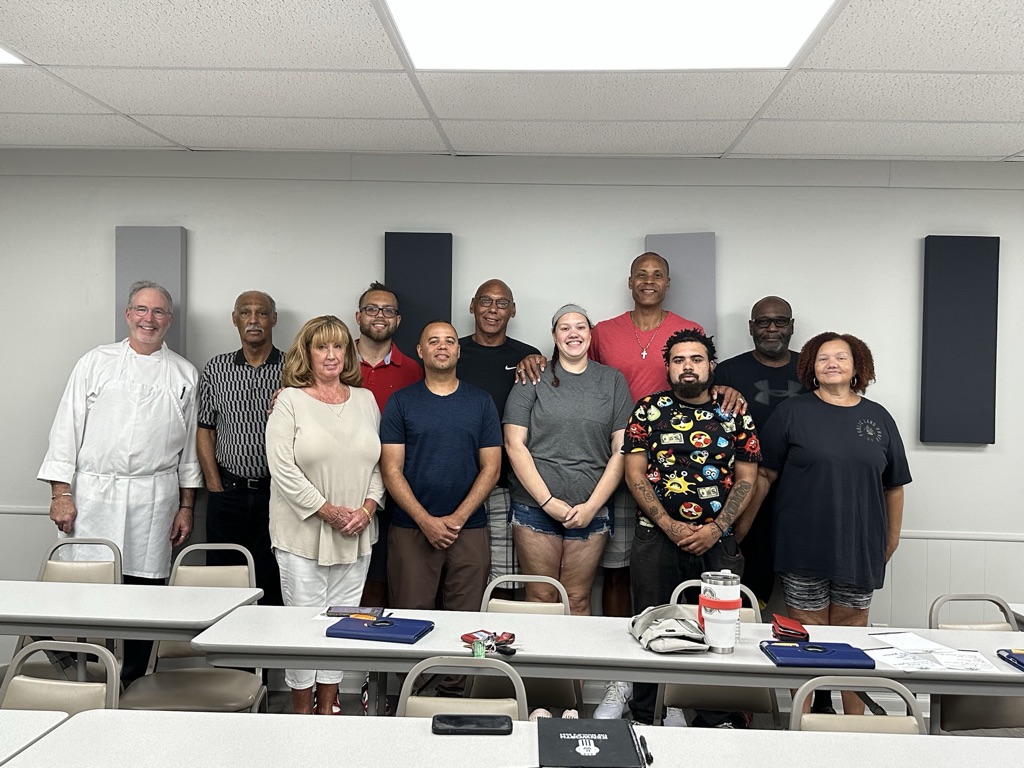Chillicothe Wellness Workshop
In Appalachia Ohio, 10 percent of the population are people of color, and yet, this demographic only receives 3 to 4 percent of the outreach dollars to impact this vulnerable area of the state. In partnership with the African American Community Fund, which exclusively serves Appalachia Ohio, LFYO presented a four-hour wealth and health workshop for black and brown Chillicothians on August 12th. Given the fact that my wife Monya grew up there as a child, this place is near and dear to my heart. Like so many southern Ohio towns, Chillicothe has seen its middle-class lifestyle become more and more constrained by factors outside and inside their control. They’ve also watched their most marketable quality — a rock-solid work ethic — result in less and less residual benefits. Blue-collar jobs lost in the 1980s due to global outsourcing forces to produce cheaper products at lower wages was the unfortunate catalyst. The resulting fatherless crisis (driven by purposeless adult males), drug dependency epidemic, and overall hopelessness have crippled the region. It’s a tale of two vastly different worlds. A shrinking minority have capitalized on an oasis of opportunities as risk-seeking entrepreneurs, real estate investors, and revered philanthropists. The expanding majority view life as one painful voyage with little hope for a promising future but full of legacy-altering, coulda-woulda-shoulda regrets. To most Appalachia Ohio residents, their opportunity glass is always half empty.
Our empowerment goals were clear-cut throughout the wellness workshop. Teach participants the language, lingo, and labeling of wealth and health through sensory-based approaches. All three — language, lingo, and labeling — embrace personal discomfort. Of course, no growth can occur without an upgraded mindset. An individual’s expectation of the future changes when exposure and experience are both transformed in the present. And it’s hard to get someone excited about a future that hasn’t been seen before. Thus, we familiarized participants with the investment world, a key pillar of a well-constructed financial plan. Investing is arguably the biggest stumbling block for any racial demographic, especially those who suffer from “math anxiety.” Investing in math is complex, but it doesn’t have to be complicated. Of course, it can serve as a compound interest friend or foe. (The bulk of the workshop was spent on investing. Typically, blue-collar communities instinctively understand the basics of personal or family finance — live below your means, avoid unnecessary debt, and maintain a respectable credit score. But most middle-class households in rural Ohio know very little about the stock market, even when working for recognizable, publicly traded companies.)
First up was The Portfolio Management Game, one of our signature learning modalities to bridge the growing and glowing opportunity divide in America. This PDF app crystallizes the world of investing in a language that’s relatable, palatable, and sustainable to every social class group. Each player is given $1,000,000 to invest in various investment options, including cash/cash equivalents, stocks, bonds, mutual funds, index and exchanged traded funds, private equity, and hedge funds. At the onset, though, an analysis of one’s risk tolerance and financial goals serve as key drivers of portfolio construction decisions. Participants must wait with bated breath as they watch how global economic factors and conditions impact — positively or negatively — their million-dollar portfolios on a macro level through four scenarios. Of course, taxes, inflation, diversification, and asset allocation are additional considerations of this real-world, simulated game.
The Portfolio Management Game was the perfect segue into the Mr. Fundy’s Stock Pro Game, a hypothetical investment game with both macro and micro components. Participants assessed the dynamics of large-cap, mid-cap, and small-cap stocks from a value-investing perspective. Each participant was given $1,000,000 to invest in five companies, which consisted of 10 large cap, 5 mid cap, and 5 trim cap options. From banks to airliners to software developers to clothing and apparel manufacturers as well as other industry categories, participants admitted that selections were made based on their “familiarity profile” — what they knew, who they trusted, and how they shopped in terms of products and services. Key metrics in the Mr. Fundy’s Stock Pro Game included earnings per share (or EPS), price-to-earnings ratio (or P/E ratio), dividend yield, return on assets (or ROA), and return on equity (or ROE). They were shown how to calculate market share (stock price x # of shares outstanding). Also, participants were taught how to find the missing variable in an algebraic equation when two out of three variables are known. For example, if earnings per share and number of shares are stated, then total earnings or net income can be found through deductive reasoning.
As a race, we’re behind the ball financially. And not much has changed for our wealth picture since The Emancipation Proclamation of 1865, which supposedly set us free. Blacks spend more money on food, clothing, and entertainment than any other ethnic group. What we touch as loyal consumers, we usually buy based on how it’ll make us feel. Who we wear regarding designer labels, in our minds, plays a large role in how we’re viewed, accepted, or denigrated in the eyes of others. Where we find laughter and enjoyment, is how we escape from our real or imaginary pain. As U.S. congresswoman Joyce Beatty once shared with me several years ago, “We, black folks, need to be on both sides of the cash register.” It’s time for us to break free from what holds us back as a people — feeling a certain way before we do a certain thing. Feelings can serve as a barometer, but they inevitably make a terrible guide. In the last hour of the workshop before Chef Jim Warner’s cooking demo, rule-of-thumb averages were highlighted in the five areas of comprehensive financial planning using a case study as the backdrop: life planning, financial management, investment planning, income and asset protection, and estate planning. (In general, it takes a minimum of 20 hours of intensive training to construct a viable foundation in personal or family finance. And scaffolding attributes to accumulate, protect, and distribute legacy wealth involve countless hours more.)
Chef Jim Warner wrapped up the workshop with a stellar presentation on healthy eating. Over the years, he has prepared meals for Kirk Herbstreit, Joey Galloway, Michael Redd, “Beanie” Wells, and yours truly. He discussed the important role nutrition can play in the lives and legacies of those who prioritize wholesome eating. Yes, it’s a matter of life or death every time we sit down to eat. Real food helps us think better, feel better, and do better. Warner highlighted, “Start today by making small changes in what you eat and drink.” He added, “Pay the price now so that you can reap the rewards later.” Every delicious food item prepared by Chef Warner was gluten-free, GMO-free, dairy-free, additive-free, soy-free, and pork-free (but not taste-free). Organic foods may cost more, but the benefits far exceed conventional alternatives. Even on a limited budget, quantity and quality of life are greatly improved when consuming foods that are good for the brain, belly, and body. Pay now, play later. Or, play now and pay later. Doesn’t matter if it’s our wealth condition or health status.


